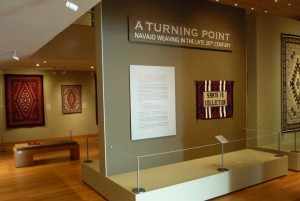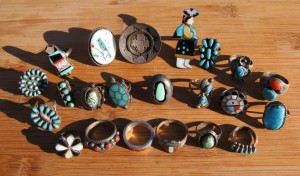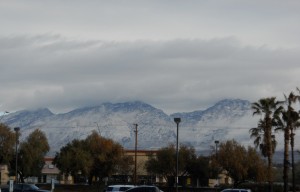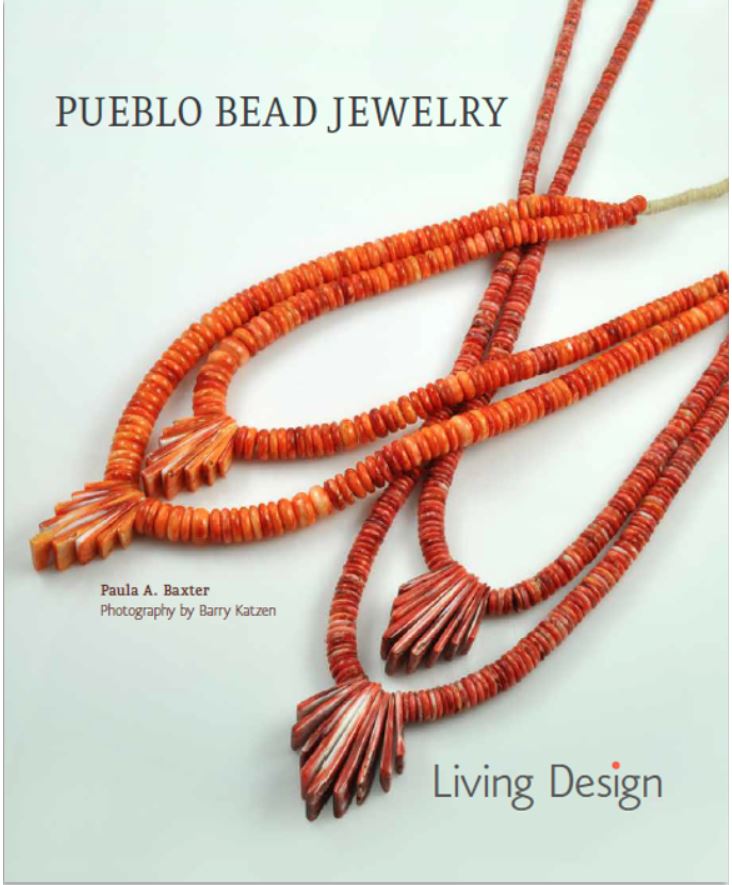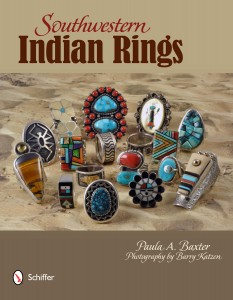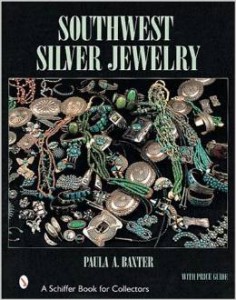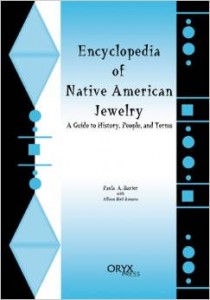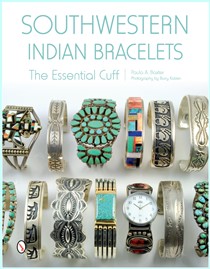One of the highlights of attending the Heard Museum Guild Indian Fair and Market, which seemed to be bigger and better than in previous years, was the museum’s exhibition, A Turning Point: Navajo Weaving in the Late 20th Century. Shows like these help collectors and interested people to pinpoint artistic trends and development. For a craft rooted in the nineteenth century, Navajo weaving has come a long way. Discoveries include:
- use of popular culture references, such as brands
- titles for certain compositions
- inclusion of rugs within other rugs to create a “framing” concept
- weavers’ pathways as significant elements
The Storm Pattern rugs were the most vivid standouts in this great exhibition.
We always enjoy receiving the newsletter from River Trading Post, with galleries in Scottsdale, AZ, Santa Fe, NM, and Dundee, IL. We enjoy visiting River Trading during the annual Art Walk held before the Heard Museum Guild Indian Fair and Market. They represent a fine lineup of artists, including multi-generational talent. A recent newsletter announced findings from a survey of collectors. According to those they surveyed, collectors prefer purchasing both older and contemporary Native-made arts. Pottery and jewelry were the leading choices for acquisition, and they particularly look to magazines American Indian Art and Native Peoples for information.
Hmm… Are you subscribing to their newsletter? (Go to their website to sign up.)
When I was a child, they were known as the Papago Indians of southern Arizona. The Tohono O’odham were among the first of a growing number of tribes to revert to their original name. Those who visit the San Xavier del Bac Mission church south of Tucson get to see some evidence of their brilliant craft work. The Tohono O’odham Basketweavers Organization is a non-profit collective of talent. They work to ensure that their weavers receive a fair price for their works, and encourage the younger generation to learn and retain skills passed on from generation to generation. You can contact them through the Tohono O’odham Community Action website, or at: Tohono O’odham Community Action, P.O. Box 1790, Sells, AZ, 85634. (520) 383-4966.
One of the greatest treasures of the Tucson region lies off the highway at 4410 S. Mission Road. We first heard about Turquoise Skies through an older travel guide. Being up-to-date, we did an online search and found a cheerful little website for a truly wonderful place.
Turquoise Skies is run by two local men, Robert Seymour and Marshall Kidder, who have an eye for the quality in Native-made arts. Turquoise Skies is a small shop, but inside are some of the most amazing Tohono O’odham baskets we’ve ever seen. The owners have been in business for a long time and know many artists well. This knowledge has brewed an intriguing selection of jewelry, pottery, weavings, basketry, stone carving, and fine arts. On the day we stopped, they disclosed how Tucson’s venues for Indian arts have dwindled from more than forty to just a handful. This is one of the best, with very good prices. Visit them online at http://turquoiseskies.com
Hi Paula,
We inherited a whole bunch of Native American jewelry (several hundred pieces in total) from my parents who sold some at a shop in the seventies. I’ve attached a couple of representative pics. About a third to a quarter of them have hallmarks. We would like to sell some of it, but we’re not really sure what we have. Can you help us find someone in the St. Louis area who can give us an idea as to value?
Thanks for your help,
Richard Newton
Southwestern Souvenirs responds:
Dear Richard:
I found some individuals for you who will be able to lead you to the right appraiser. From ATADA (Antique Tribal Arts Dealers Association), I located Joseph Zeller, who is in East Dundee, Illinois, the closest location I could find to St. Louis. He is part of River Trading Post, which operates three stores: in Illinois, Santa Fe, NM, and Scottsdale, AZ. I know this outfit and they are very reputable; he can help you locate an appraiser, or someone at River may be trained to do this. River Trading Post, tel (847) 426-6901 and e-mail: trader@rivertradingpost.com
Closer to you geographically are the following members of the IACA (Indian Arts and Crafts Association), and I have heard of the Native American Trading Company. They, too, will acquaint you with someone who can help.
Native American Trading Co.
Michael O’Cheltree
115 N Main Street
Hannibal, MO 63401-3536
573.248.3451, Fax: 573. 221.4054
Email: natamtrd@sbcglobal.net
Website: www.nativeamericantrading.com
Silver City Trading Post
Richard Sellers, Barb Schnarr
724 S. Main St
St. Charles, MO 63301
636.255.8885, Fax: 636.255.8885
Email: silver_city@sbcglobal.net
The pieces I saw in your photo were quite nice; they look like they range from the 1940s to early 1980s. All of the individuals above will be familiar with this jewelry. The vintage jewelry market has seen a rise in interest lately, but be aware that the pre-1940s pieces in good condition will fetch higher prices. For example, your 1970s items will resell for about $120-$200 roughly, depending on materials and condition. Members of ATADA and IACA are bound by guarantees of ethical practices, which is important when dealing with American Indian jewelry — which has its own black market of fakes and misrepresentation. Good luck! I rather fancied some of those Zuni inlay rings, myself!
Paula
The Tohono O’odham reservation abuts the city limits of Tucson. These Sonoran Desert dwellers, who were known as the Papago Indians in less enlightened times, are particularly known for their basket and object weaving. They are also masters of an important design motif: the man in the maze.
Dating to the pre-contact era, this design symbolizes a keen understanding of man’s physical and metaphysical existence. Today, the man in the maze motif appears on many Southwestern Native arts, including jewelry.
Tom Bahti was an Indian trader in the mid-twentieth century who also wrote about his vocation. His son, Mark, has continued the tradition. He ran his gallery for many years solely in Tucson, before expanding to a second shop in Santa Fe.
We visited the Santa Fe store briefly during Indian Market this year and found it packed to the rafters. We couldn’t get any closer, but this shop carries a large selection of Indian jewelry. The selection is smaller at the Tucson gallery, but offers selections from a solid range of contemporary talent, including Navajo, Zuni, and Santo Domingo artists. There was a small case of superb vintage jewelry pieces. An equally small but good assortment of fetish carvings, katsinas, baskets and pottery are available.
When we were at the Tucson store, some remodeling was happening that will culminate in a gallery that offers fine arts. We saw an installation in progress of abstract-looking paintings by a Native artist.
Shop at Bahti Indian Arts if you want to be assured of good quality arts with impeccable pedigrees.
We recently arrived in the Southwest determined not to encounter show. Our original plans were to head to Prescott, but the weather forecast was for 6-13 inches of snow. NO! So we headed down I-10 to Tucson instead. This city is a college town, and has that feeling. Tucson does not possess any particular “Indian” feeling. One local informed me that in the last decade alone, the city went from more than twenty places that sell Indian arts to just a handful. We’ll report on those remaining venues in the weeks ahead.
Sunday, however, we and all of Tucson woke up to a rare event — snow in the air, mantling the Santa Catalina Mountains and general amazement. One young woman in a coffee shop said she’d lived in Tucson all her life and had seen snow only a couple of times. During the afternoon, we toured Tohono Chul Park nature preserve while soft white flakes drifted around us.
Camel Rock near Tesuque Pueblo in New Mexico, has seen a lot of comings and goings. The busy road that passes by this natural rock formation conveys people north to Espanola and Taos. Recently, however, most of the buzz has been about the Buffalo Thunder Resort. This new destination adds more spice to a well-worn thoroughfare.
Fort Worth, Texas, quite a bit southeast of the Four Corners, contains several memorable Art Deco buildings, including the Sinclair Building (1930) and the Kress Building (1936).
And on one side of Sundance Square is the wonderful Chisholm Trail mural, painted by Richard Haas in 1983. The mural is a nice piece of “trompe l’oeil” — it’s on a completely flat wall but looks like it’s a stone monument jutting out from the building. The mural commemorates the 1867-1875 cattle drives that went through Fort Worth.
